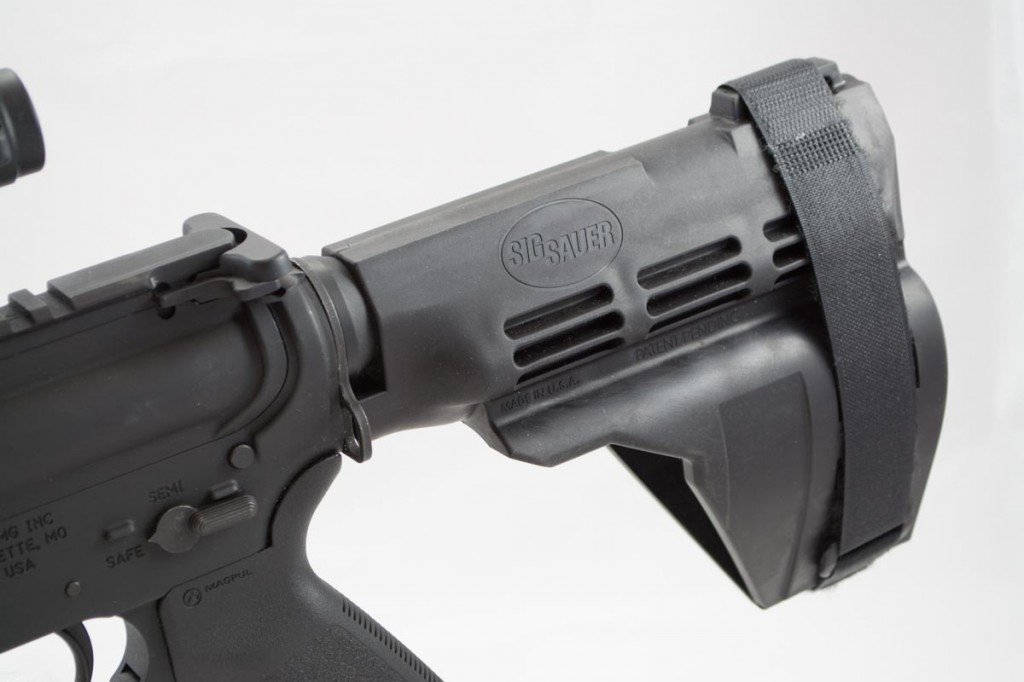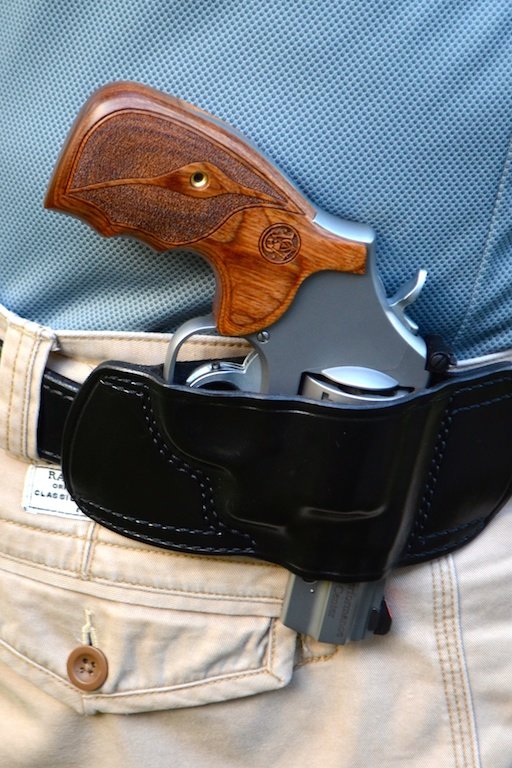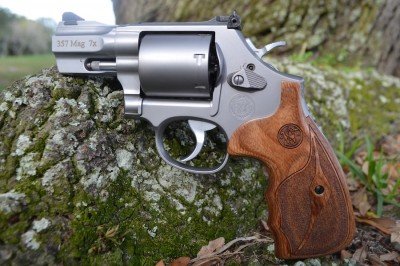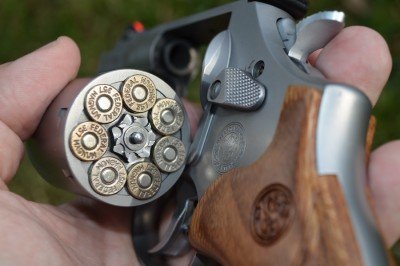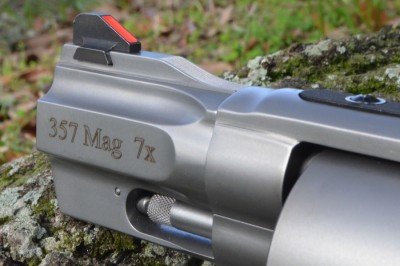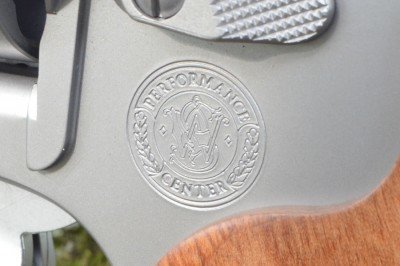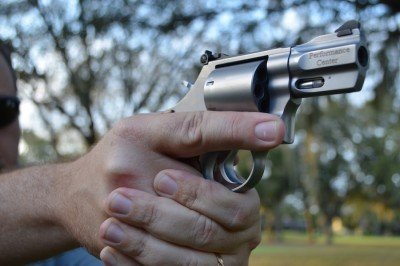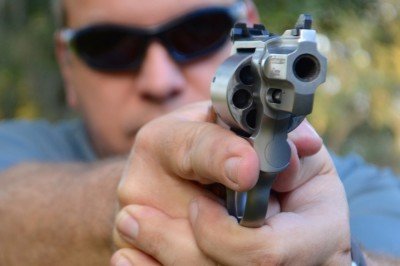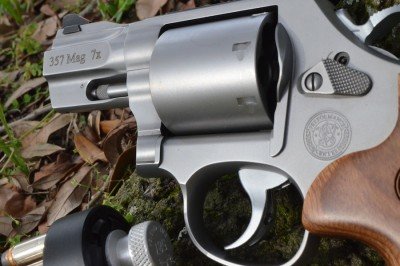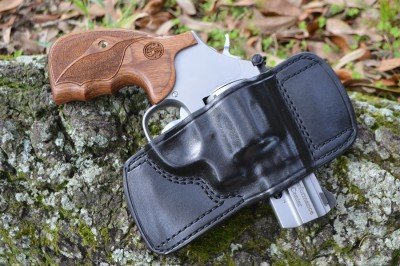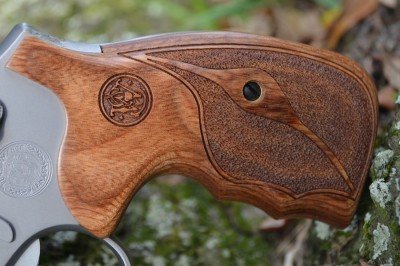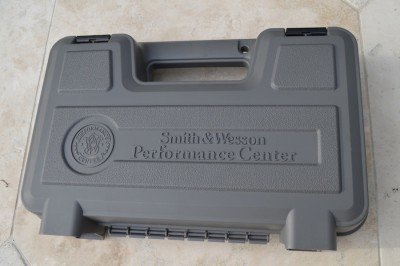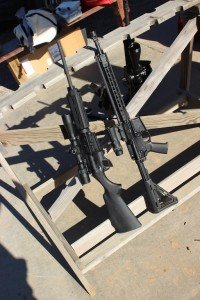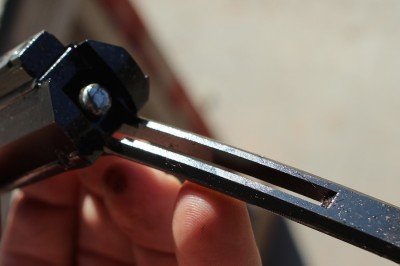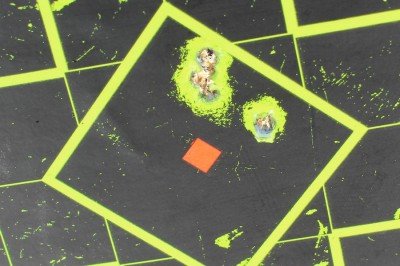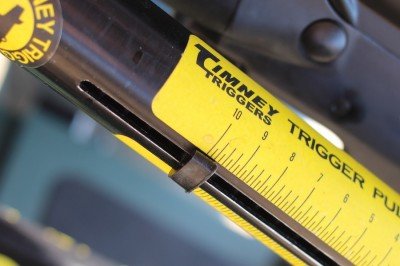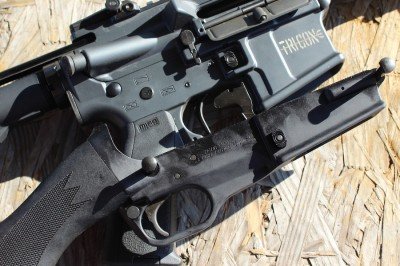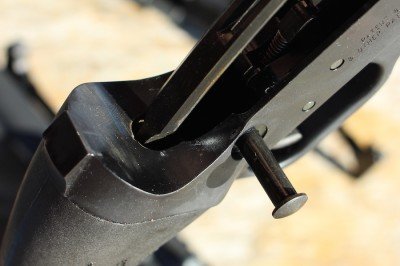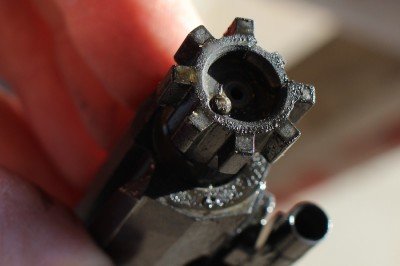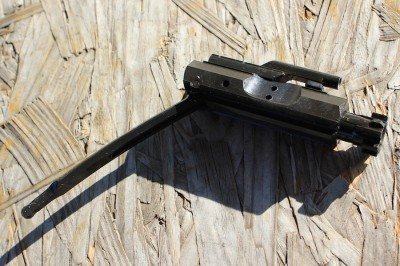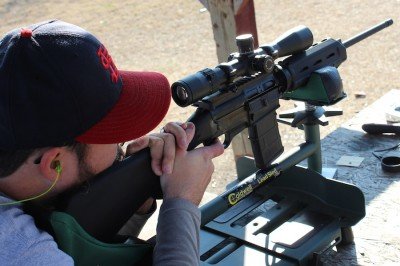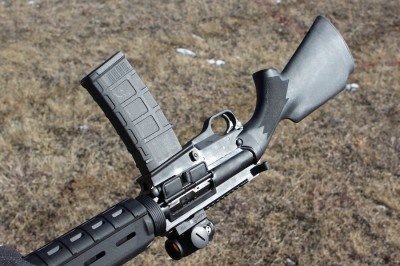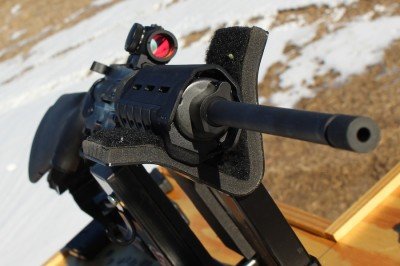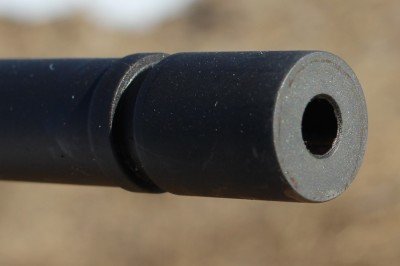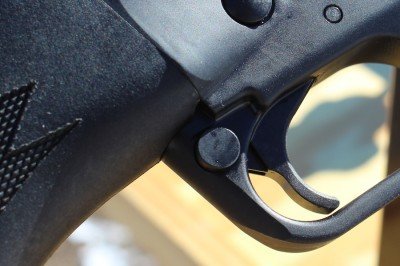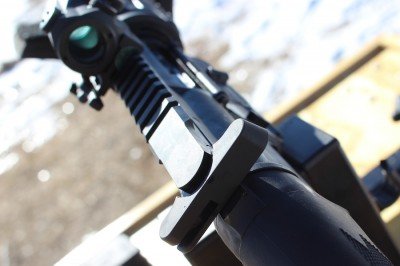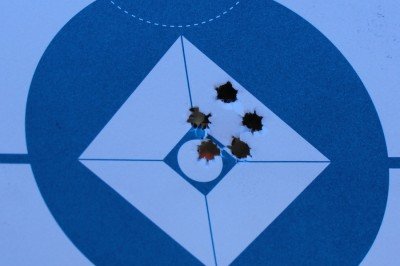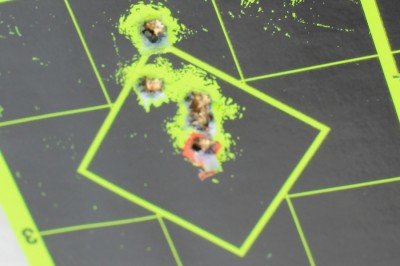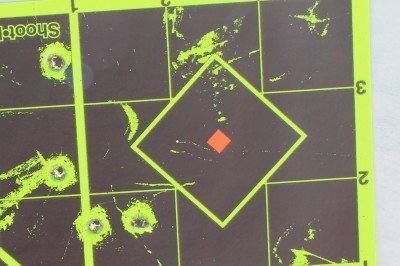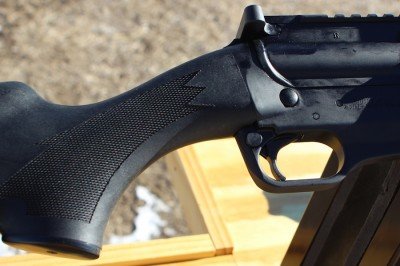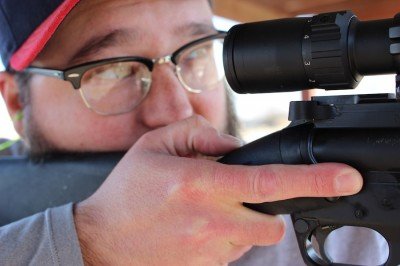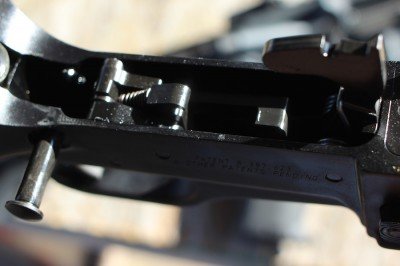Evidence: Hands Off! Don’t Move It!
Kevin_ITF_Article_1-26-15
Kevin Michalowski | January 26, 2015 | 0 Comments
inShare
If you are involved in a deadly force incident, don’t touch the evidence! No matter what you have heard from jailhouse lawyers and barstool commandos, tampering with evidence is the quickest way to move yourself from victim to suspect.
This comes up again because we have received a few notes at Concealed Carry Magazine asking about such things. I can’t even begin to describe how incredibly bad an idea it is to touch anything at a crime scene. Keep your hands off the evidence. Keep your eye on it. Point it out to arriving officers, but don’t touch it.
Into the Fray, Episode 46: Hands Off! Don’t Move The Evidence
Tampering with evidence is a crime. If you’re forced to defend yourself with a gun, do not touch ANYTHING.
If you are involved in a deadly force incident, don’t touch anything after the shooting. Focus on your safety and be prepared to make a statement after your attorney arrives. If you move anything, your intentions quickly become suspect as you have tampered with evidence.
Monday, January 26, 2015
Texas: Summary of Major Pro- & Anti-Gun Legislation Filed To Date in the Legislature
NRA-ILA: Institute for Legislative Action
Texas: Summary of Major Pro- & Anti-Gun Legislation Filed To Date in the Legislature
The Texas Legislature convened for its 2015 Regular Session on January 13. Dozens of pro-Second Amendment measures were either pre-filed or have been introduced in recent weeks, along with a handful of sweeping gun control bills. The filing deadline for legislation is not until March 13, and NRA-ILA anticipates that many more firearm- and hunting-related bills, both good and bad, will materialize between now and then.
Contact information for state Senators can be found at www.senate.state.tx.us and for House members at www.house.state.tx.us. A list of Senate Committees was released late Friday and the House is still organizing itself, so the following measures have not yet been assigned to committee or scheduled for a hearing in either chamber. NRA-ILA will keep you informed as to where these bills are referred and when they see action, but in the meantime, here’s a rundown of the major legislation we are tracking thus far in Austin that could affect Texas gun owners and sportsmen:
Campus Carry
Today, state Senator Brian Birdwell (R-Granbury), along with 19 Senate co-authors, and state Representative Allen Fletcher (R-Tomball) introduced Senate Bill 11 and House Bill 937, respectively, to remove restrictions in state law that prohibit law-abiding, adult Concealed Handgun Licensees (CHLs) from protecting themselves on college and university campuses. You can expect to see the same misguided bias against these bills from some in the Texas media this session, but interestingly, a major newspaper in Nevada recently endorsed and strongly recommended passage of a similar measure filed in that state’s legislature. From the editorial, entitled: “Law-abiding citizens shouldn’t be defenseless on college campuses”:
‘Bad guys don’t obey gun laws, on college campuses and elsewhere. Lawmakers who oppose campus carry proposals must acknowledge that gun-free zones essentially create defenseless target zones. Considering the president of the United States and college administrators claim there is a sexual assault crisis on college campuses, why would lawmakers deny women the ability to defend themselves?’ - Las Vegas Review Journal
To read the editorial in its entirety, please click here.
Open Carry
Numerous versions of open carry bills have been filed, which can best be broken down into the following categories:
Constitutional or Permitless Carry: House Bill 195, pre-filed by state Representative Jonathan Stickland (R-Bedford) and Senate Bill 342 by state Senator Don Huffines (R-Dallas) would remove the requirement that an individual obtain a Concealed Handgun License in order to carry a legally-possessed firearm openly or concealed in the State of Texas.
Open Carry for CHLs: House Bill 164, pre-filed by state Representative James White (R-Woodville), House Bill 910 by state Representative Larry Phillips (R-Sherman), and Senate Bill 346 by state Senator Craig Estes (R-Wichita Falls) would remove the requirement that CHLs carry their handguns hidden from plain view and allow them the option of carrying them wholly or partially visible in a belt or shoulder holster. House Bill 106, pre-filed by state Representative Dan Flynn (R-Van), House Bill 291 by state Representative Dan Huberty (R-Kingwood) and House Bill 415 by state Representative Debbie Riddle (R-Spring) are similar to those bills, but they also specify that holsters used by CHLs have dual points of resistance.
Right to Hunt and Fish Constitutional Amendments
As previously reported, legislation has been filed to amend the state constitution and establish an individual Right to Hunt & Fish: House Joint Resolution 61, pre-filed by state Representative Trent Ashby (R-Lufkin) and Senate Joint Resolution 22 by state Senator Brandon Creighton (R-Conroe). These important measures would ensure that future wildlife management decisions are based on sound science to protect the Lone Star State’s hunting heritage for generations to come.
Clarifying or Repealing Prohibited Locations for Concealed Handgun Licensees (CHLs)
House Bill 226, pre-filed by state Representative Ryan Guillen (D-Rio Grande City) and Senate Bill 273 by state Senator Donna Campbell (R-New Braunfels) would impose civil fines on state agencies, cities or counties that improperly post 30.06 signs prohibiting CHLs from public property which is not off-limits to them under the Texas Penal Code. These bills are an effort to provide much-needed clarity for license holders.
House Bill 308, pre-filed by state Representative Drew Springer (R-Gainesville) would remove all restrictions on where CHLs may lawfully carry that currently exist in the Penal Code, and Senate Bill 311 by state Senator Campbell would repeal the criminal prohibition on carrying in certain locations listed in Sections 46.03 and 46.035 that are considered private property or privately-owned businesses.
Second Amendment or Sportsmen’s Sales Tax Holiday
House Bill 206, pre-filed by state Representative Jeff Leach (R-Plano), House Bill 712 by state Representative Drew Springer (R-Gainsville) and Senate Bill 228 by state Senator Brandon Creighton (R-Conroe) all create sales tax holidays for firearms and/or hunting supplies to be held one weekend a year around the start of hunting season. These bills are modeled after popular tax-free weekends held annually in both Louisiana and Mississippi for gun owners and sportsmen.
Anti-Gun Legislation Filed To-Date
State Senator Rodney Ellis (D-Houston) has filed a laundry list of deeply flawed gun control measures. You can expect to see more anti-gun bills filed on the House side before the deadline to introduce legislation passes:
Senate Bill 256 bans the possession or transfer of so-called “large capacity magazines”;
Senate Bill 257 creates a criminal offense for failing to report a lost or stolen firearm to a law enforcement agency within 48 hours;
Senate Bill 258 restricts the private transfers of firearms at gun shows; and
Senate Bill 259 criminalizes the private transfers of firearms – even between neighbors, friends, co-workers and certain family members – and establishes an immense new state bureaucracy to implement such new restrictions.
While these are the major pro- & anti-gun and hunting bills filed for the 2015 session, this is by no means an exhaustive list. You can search for specific bills on particular subjects of interest to you at http://www.legis.state.tx.us/search/billsearch.aspx. Rest assured that NRA-ILA is tracking all measures affecting your rights and we will continue to report on their progress as the session moves ahead.
Sig Sauer Challenges ATF Open Letter Regarding SB-15 Brace Use
How to use or not to use, that is the question.
The Sig Sauer SB-15 stabilizing brace for AR-type pistols has exposed some sticky legal questions. Does the use of a product define its purpose? For example, if one uses a hammer to remove a corroded battery terminal from a 1970 Gremlin, does the use redefine that same hammer as a wrench?
Historically, the BATF, citing National Firearms Act (NFA) regulations, has adhered to clear boundaries related to the design of a firearm. If a firearm fell outside of technical definitions, its manufacture and transfer was deemed subject to the terms of the NFA. For example, if a manufacturer put forth a rifle with a 12-inch barrel, it would be subject to NFA restrictions. Clear enough, right?
In the case of the Sig Sauer SB-15 Stabilizing Brace, the ATF has gotten itself into a pickle. Initially, the agency issued a ruling in favor of the Sig Sauer stabilizing brace, stating that “We find that the device is not designed or intended to fire a weapon from the shoulder. Based on our evaluation, FTB finds that the submitted forearm brace, when attached to a firearm, does not convert the weapon to be fired from the shoulder and would not alter the classification of a pistol or other firearm.”
In a subsequent open letter, the ATF appears to contradict its stance of applying NFA regulations to firearms design rather than use. According to the newest ATF letter, “Because the NFA defines both rifle and shotgun to include any “weapon designed or redesigned, made or remade, and intended to be fired from the shoulder,” any person who redesigns a stabilizing brace for use as a shoulder stock makes a NFA firearm when attached to a pistol with a rifled barrel under 16 inches in length or a handgun with a smooth bore under 18 inches in length.”
In plain English, the ATF appears to have stated that the method of use of a firearm can qualify as a product “redesign.” Even though the parts and installation remain exactly the same, the method of holding a certain gun can create a “redesign” that makes it an illegal product. This opens up a can of worms that puts any barrel of monkeys to shame. Back to the hammer example, if I strike a nail, the thing in my hand is still a hammer. If I smash it on a ream of copier paper, is it now a printing press subject to FCC regulation? Likewise, if one holds the Sig brace equipped pistol at shoulder height, is it illegal? What if the user mounts the brace an inch below, does that qualify as a redesign of the product?
Does a consumer’s use of a product define its intent? Does the ATF have the legal authority to define law? What is the legal authority of an “open letter” from a federal government agency? These questions and many more remain.
On January 21, 2015, Sig Sauer issued a statement addressing the issue:
This is gonna get interesting folks.
The Sig Sauer SB-15 stabilizing brace for AR-type pistols has exposed some sticky legal questions. Does the use of a product define its purpose? For example, if one uses a hammer to remove a corroded battery terminal from a 1970 Gremlin, does the use redefine that same hammer as a wrench?
Historically, the BATF, citing National Firearms Act (NFA) regulations, has adhered to clear boundaries related to the design of a firearm. If a firearm fell outside of technical definitions, its manufacture and transfer was deemed subject to the terms of the NFA. For example, if a manufacturer put forth a rifle with a 12-inch barrel, it would be subject to NFA restrictions. Clear enough, right?
In the case of the Sig Sauer SB-15 Stabilizing Brace, the ATF has gotten itself into a pickle. Initially, the agency issued a ruling in favor of the Sig Sauer stabilizing brace, stating that “We find that the device is not designed or intended to fire a weapon from the shoulder. Based on our evaluation, FTB finds that the submitted forearm brace, when attached to a firearm, does not convert the weapon to be fired from the shoulder and would not alter the classification of a pistol or other firearm.”
In a subsequent open letter, the ATF appears to contradict its stance of applying NFA regulations to firearms design rather than use. According to the newest ATF letter, “Because the NFA defines both rifle and shotgun to include any “weapon designed or redesigned, made or remade, and intended to be fired from the shoulder,” any person who redesigns a stabilizing brace for use as a shoulder stock makes a NFA firearm when attached to a pistol with a rifled barrel under 16 inches in length or a handgun with a smooth bore under 18 inches in length.”
In plain English, the ATF appears to have stated that the method of use of a firearm can qualify as a product “redesign.” Even though the parts and installation remain exactly the same, the method of holding a certain gun can create a “redesign” that makes it an illegal product. This opens up a can of worms that puts any barrel of monkeys to shame. Back to the hammer example, if I strike a nail, the thing in my hand is still a hammer. If I smash it on a ream of copier paper, is it now a printing press subject to FCC regulation? Likewise, if one holds the Sig brace equipped pistol at shoulder height, is it illegal? What if the user mounts the brace an inch below, does that qualify as a redesign of the product?
Does a consumer’s use of a product define its intent? Does the ATF have the legal authority to define law? What is the legal authority of an “open letter” from a federal government agency? These questions and many more remain.
On January 21, 2015, Sig Sauer issued a statement addressing the issue:
“As reaffirmed in an Open Letter by ATF’s Firearms and Ammunition Technology Division dated January 16, 2015, the Pistol Stabilizing Brace (SB15 and SBX) is legal to own, legal to purchase, and legal to install on a pistol. SIG SAUER® believes that the PSB improves the single-handed shooting performance of buffer tube equipped pistols, and offers the product both as an accessory and pre-installed on a number of pistols.As the statement from Sig Sauer indicates, the company believes that how a customer chooses to use a product does not constitute a “product redesign.” Just because a consumer might use a can of creamed corn to pound a nail doesn’t make that packaged vegetable a hammer. It’s still a can of creamed corn, dented or not.
“The Open Letter goes further to rescind a previous private letter regarding the ‘intent’ of the user of the pistol stabilizing brace. In the letter of January 16, 2015, ATF opines that a person’s actual use of the product as a shoulder stock can change the legal classification of the product. However, the Open Letter explicitly states: “ATF hereby confirms that if used as designed—to assist shooters in stabilizing a handgun while shooting with a single hand—the device is not considered a shoulder stock and therefore may be attached to a handgun without making a NFA firearm.”
“We question ATF’s reversal in position that the classification of the brace may be altered by its use. We are reviewing the legal precedents and justification for this position, and will address our concerns with ATF in the near future.
“We will vigorously defend the classification of all of our products and our consumers’ right to use them in accordance with the law. If we find that the open letter opinion is outside the scope of the law, we will seek further review.”
This is gonna get interesting folks.
Smith & Wesson
Specifications
- Manufacturer: Smith & Wesson
- Model: 686 Plus (Performance Center)
- Frame Size: L-Frame
- Caliber: .357 Magnum / .38 Special +P
- Action: Double Action / Singe Action
- Capacity: 7 Rounds
- Barrel Length: 2.5 inches
- Front Sight: Red Ramp
- Rear Sight: Adjustable
- Overall Length: 47.5 inches
- Grip: Wood
- Weight: 35 ounces
- Barrel Material: Stainless Steel
- Cylinder Material: Stainless Steel
- Frame Material: Stainless Steel
- Finish: Matte Glass Bead Blast
- M.S.R.P.: $1,089
This Performance Center 686 Plus firmly straddles the line between old school and modern design. At its core, this revolver is a stainless-steel double-action revolver with wood grips and iron sights. But this 686 Plus has a capacity of seven rounds in the same diameter cylinder that used to only fit six. Combine that increased capacity with the magic of some fine-tuning in the Performance Center, and you have a thoroughly modern defensive revolver.
Better Features
Of course, this PC 686 Plus is considerably larger than the classic 5-shot snubby revolver. At 7.5 inches long and nearly 35 ounces in weight, this gun is not suited for pocket carry. However, if you are willing to carry a larger revolver, the size increase pays huge dividends. The 686 Plus has good-sized wood stocks that will fit even large hands. And, the larger “L-frame” makes for a more comfortable grip and trigger reach than small-frame snubbies.Since 1996, Smith & Wesson has offered L-frame .357 Magnum revolvers in six or seven shot capacities. Although the cylinder diameter is the same, modern advances in materials technology have allowed the cylinder walls to be thinned enough to fit an extra round. While some traditionalists still prefer the traditional 6- round L-frame, when it comes to a defensive revolver, the extra round is a huge benefit. By comparison, the 686 Plus has 40% more capacity than a typical small-frame snub nose revolver. With seven rounds on tap, the 686 Plus is approaching the capacity of most single-stack semi-auto pistols suitable for concealed carry. All of a sudden, carrying a revolver instead of a semi-auto doesn’t seem like so much of a compromise in ammunition capacity.
Perhaps the most distinguishing feature of this particular 686 Plus is the extra attention from Smith & Wesson’s talented Performance Center gunsmiths. Performance Center guns are Smith & Wesson’s best products, designed for their most demanding customers. This translates into a high level of fit and finish, but more importantly, a well-tuned action. This type of refinement is particularly valuable in a double-action revolver, which can have a long and heavy trigger. The Performance Center tuning produces a light and smooth trigger pull. Together with the smaller required rotation of the 7-shot cylinder, this 686 Plus trigger is a delight. I have experienced better revolver triggers on finicky target guns, but the Performance Center guns strike a proper balance between a light trigger and rock solid reliability.
The Performance Center snub is adorned with a few distinguishing cosmetic features, like the unfluted cylinder and the slab-side barrel. The gun also sports an engraved Performance Center logo on the left side-plate, and a laser etching on the barrel shroud. Both give the revolver a unique custom appearance.
Better Performance
Shooting a snubby revolver is usually a challenge. Shooting a .357 Magnum snubby revolver is always a challenge. I have mostly given up on shooting small-frame Magnums, unless I am required to do so. It can be done, but I am not a fan.Shooting .357 Magnum rounds from an L-frame snubby revolver, however, is a far better experience. The additional weight, along with the larger frame and grips, make a big difference. Although shooting Magnums will still definitely get your attention, the gun is manageable with a proper crush grip. Regardless, a snubby Magnum revolver is not well suited to anyone who is recoil sensitive. At least you always have the option of shooting .38 Special +P, if desired.
Even with the short barrel, this 686 Plus offers strong ballistic performance with Magnum loads. I tested four different brands of premium defensive ammo, and all produced average muzzle velocity in excess of 1,100 feet per second. At these velocities, you should be able to expect excellent performance from modern expanding jacketed hollow point bullets.
The 686 Plus is also exceptionally accurate for snubby. I had no problem with drilling out the x-ring of a standard NRA target at 7 yards. Similarly, a steel plate rack at 10 yards can be cleared with no problem. Even at 25 yards, head shots on a silhouette are easy to come by. This is due in part to the revolver’s excellent adjustable rear sight, and high visibility red ramp front sight.
This revolver is also set up for using moonclips, which hold all seven rounds as a single unit for ease of loading and unloading. A discussion of the pros and cons of moonclips is unfortunately beyond the scope of this article. The utility of moonclips in a defensive revolver is open to debate–but there is no drawback to having the cylinder cut to accept them. With this 686 Plus, you have the option of using moonclips or not.
Better Snubby
While not really fair to compare this gun to a traditional small-frame snubby revolver, that is a natural comparison. The PC 686 Plus snub is much easier to shoot, more accurate, and more powerful. With seven rounds of .357 Magnum on tap, this gun compares favorably with the firepower of many semi-automatic handguns. If you are a “revolver guy,” and want to carry a wheel gun, you don’t have to feel under gunned with this 686 Plus.Prices of quality revolvers have been creeping up in recent years. A standard 686 Plus snubby retails for $849. Performance Center guns, however, always command a premium price. The PC version of the 686 Plus snub retails for $1,089. For the extra $240, you get wood grips, different sights, a cylinder cut for moonclips, and a hand tuned action. In my opinion, the extra cash is very well spent. As with any Smith & Wesson firearm, the 686 Plus is covered with a lifetime service policy, and their customer service is some of the best in the business.
Carrying a snub nose revolver is always a compromise of some kind. The Performance Center 686 Plus addresses some of these shortcomings with additional capacity and ease of use. Unfortunately, that additional capability comes in a package much larger than the traditional snubby revolver. If you can cope with the additional size and weight, this is a remarkable carry gun. A blend of old and new technology, with some custom craftsmanship thrown in, makes this 686 Plus a better snubby, and a great choice for carry.
The author would like to thank Winchester (www.winchester.com), Federal (www.federal premium.com), and Hornady (www.hornady.com), for providing ammunition for testing. All shooting was done at the Southern Exposure training facility in Lakeland, Florida (www.southernexposuretraining.com).
50 State Legal AR-15
Somehow the ARES Defense SCR
had passed under my radar until it showed up for review. When my editor
handed it to me, I opened up the box and thought–yep its an AR…. Oh
wait. Is this an AR? Yeah, but no?! I was taken aback for a moment while
I stood there looking at the rifle, trying to wrap my head around it.
It looks a bit like an AR crossed with a semiautomatic shotgun. And it’s
damn cool.
So what is the SCR? Lets get the specs out of the way first.
There are a few other obvious things that are typical on an AR platform rifle that missing: a shell defector, forward assist, and muzzle break. The next thing that sticks out is the size and shape of the lower. It is smaller and shorter than Mil spec. The lower with the Monte Carlo style stock gives this rifle lines that are reminiscent of a Remington 742 or 750. The SCR also has a cross bolt style safety behind the trigger and not the lever found on most ARs. And where is that buffer tube?
Then there are the “hey, I’m an AR” things. The upper looks like an AR upper. It should because it is. It has the charging handle like an AR, for example. The ARES SCR lower will take any standard AR upper as long as it has the cut out where the full auto sear would be. The SCR utilizes some of that space for its trigger group to help make the lower smaller. It also takes AR magazines and ships with a 5 round one. The handguard on the stock model is a Magpul MOE and can be swapped for another AR handguard of your choice.
I used an Aimpoint H1 and a Weaver Tactical. Both worked really well on the gun, though the low mounted scope wasn’t nearly as compact and maneuverable as the low mounted H1.
I couldn’t really tell much difference in felt recoil versus a regular AR. I was curious if the different angle of the stock would make it feel differently. But since .223 is not exactly a heavy recoil round, I couldn’t tell much difference. Nor did muzzle rise seem exaggerated. With the AR hand guard, you can use whatever style grip you like to use with an AR.
I did shoot some 10 inch steel plates at 200 and 300 yards with good consistency (especially considering the wind). Does the rifle have that kind of potential for long range work? I think so. It has at least as much potential for long range work as your typical AR in .223.
The above groups were all shot from a bench on a sled. The groups opened up when fired from the shoulder of course, but the bench groups show what this rifle is capable of.
The 1st one is pretty minor. I do not like the way the end of the muzzle is done. There is not really any crown to protect the muzzle. The barrel is not threaded, either. I understand the lack of the threaded barrel. They are trying to make this a 50 State legal rifle.
There is an angled cut at the muzzle like Ruger does on a lot of their revolvers, but it is not very deep.
The other is a bit bigger. The trigger on the SCR. It is rough. For one, the trigger is hard–around 10 pounds. There isn’t a ton of grit in it, but there is a lot of creep and a mushy feeling reset. This is another one of the places where this is not an AR. You couldn’t just drop in a new trigger in this rifle, like an AR Gold or the like. Because of the smaller lower, the best I can tell is that this is a proprietary trigger. It is easy to see how it works, and I am pretty sure I could get my files and stone out and make an improvement. I would do this if it were my gun and not a review sample.
But look at the accuracy potential of this gun. Think what it would be if you had a much lighter, crisper trigger. I don’t think I’d have had so many group-killing random fliers.
The MSRP is around the $850 mark on the review rifle. Ares also offers a lower for around $500. That is for a complete lower and the bolt carrier group to use with the stock.
But let’s get back to the real question at hand. Is this an AR pattern rifle? Yes and no. If you want it to be a 50 state legal hunting rifle, it certainly can be. If you want it for home defense in places where idiot’s laws prevent one form owning an actual AR-15, the SCR will certainly provide you with that, too. I’m inclined to treat it like I would any AR. It runs almost as fast. The safety is fast enough. The magazine button requires a longer reach, though. And there may be just a bit more of a delay between shots (partly because of the clean muzzle and partly due to the trigger). The reality, though, is that these delays are hard to measure without a stopwatch. From my perspective, the SCR is a solid workingman’s rifle in its own right, and a fantastic option for those living under tyrannical rule.
To AR or Not To AR?
Who wants an AR inspired rifle that’s not truly an AR-15? The answers to this vary. The SCR is 50 state legal. So there’s that. If you want a rifle with similar capabilities, but can’t own terror-inducing AR-15s, this will have some appeal. And then there are those who just don’t like pistol grips. They’ll find this gun compelling, too. So how close is it to an AR, really? I’ll come back to that in the end.So what is the SCR? Lets get the specs out of the way first.
- Caliber .223/5.56 and 7.62X39
- Barrel 16.25” (carbine) 18” (rifle) 1/9 Twist
- Length 37” carbine 39” Rifle
- Stock Sporter, Short Sporter or Monte Carlo
- Handguard Magpul MOE
- Black Anodized Finish
There are a few other obvious things that are typical on an AR platform rifle that missing: a shell defector, forward assist, and muzzle break. The next thing that sticks out is the size and shape of the lower. It is smaller and shorter than Mil spec. The lower with the Monte Carlo style stock gives this rifle lines that are reminiscent of a Remington 742 or 750. The SCR also has a cross bolt style safety behind the trigger and not the lever found on most ARs. And where is that buffer tube?
Then there are the “hey, I’m an AR” things. The upper looks like an AR upper. It should because it is. It has the charging handle like an AR, for example. The ARES SCR lower will take any standard AR upper as long as it has the cut out where the full auto sear would be. The SCR utilizes some of that space for its trigger group to help make the lower smaller. It also takes AR magazines and ships with a 5 round one. The handguard on the stock model is a Magpul MOE and can be swapped for another AR handguard of your choice.
How it Works
So how does this rifle work without a normal buffer tube? Well, if you have ever been inside a Remington 1100, Mossberg 900, or other similar gas operated shotguns, you can probably figure it out. The bolt carrier on the SCR has a hinged rod that pushes on a recoil spring in the stock just like the above-mentioned shotguns. A simple and yet ingenious idea that works amazingly well on the review gun. Getting the rod lined up in the retainer cup in the stock does take a little trial and error. It has the two pins that hold the upper and lower together, like on an AR, but it is a bit harder to put together because you have to position things perfectly.No Bolt Hold Open
The stock SCR does not hold the bolt back when the magazine is empty. Actually, It doesn’t hold it back at all. AERS does have a solution for this. They sell what looks to be a very simple add-on bolt catch. This sells for around $30. Here is some text from AERS about it from their Facebook page:Installation is accomplished by removing the magazine and clearing the rifle of all ammunition. Next, separate the upper and lower receivers by pushing out the two captive takedown pins. Next, remove the plug that is factory installed in the lower by sliding it out the left side of the receiver. Install the bolt catch assembly by sliding in into the receiver and seat it firmly into its slot. Reassemble the receiver halves by following the instructions in the User’s Manual. That’s it!
Fit and Finish
This is a part of the rifle that screams AR. The stock is synthetic and the upper and lower is black anodized. The finish is well applied and free of blemishes. There is a little bit of wiggle between the upper and lower. It is not a whole lot of movement, and didn’t seem to affect anything, but it was there and felt I should mention it.Optics
The SCR has a section of rail on the top of the upper but does not come with sights. According to their Facebook page, ARES Defense is planning on offering some iron sights for the SCR in the near future. Of course, with the rail, you can put just about anything you want to up top. However, whatever you pick it should be low mount. With the Monte Carlo stock I went with a couple of low mount options for an optic. The higher mounts would not let me get my cheek down on the stock.I used an Aimpoint H1 and a Weaver Tactical. Both worked really well on the gun, though the low mounted scope wasn’t nearly as compact and maneuverable as the low mounted H1.
Function
I ran a plethora of brands of .223 and 5.56 ammo through the SCR without a single malfunction. It ate cheap steel cased Russian ammo and Hornady V-Max without problems. 30 round mag dumps from a P-mag and slow fire from the supplied 5 round all went smoothly.I couldn’t really tell much difference in felt recoil versus a regular AR. I was curious if the different angle of the stock would make it feel differently. But since .223 is not exactly a heavy recoil round, I couldn’t tell much difference. Nor did muzzle rise seem exaggerated. With the AR hand guard, you can use whatever style grip you like to use with an AR.
Accuracy
The review gun was very impressive punching paper and ringing steel at the range. With the Weaver Tactical mounted, I took the SCR out to 100 yards. One group of 5 was just under an inch, though most were just over. It was also pretty windy (10-15 mph gusts) so I didn’t take it out any further on paper.I did shoot some 10 inch steel plates at 200 and 300 yards with good consistency (especially considering the wind). Does the rifle have that kind of potential for long range work? I think so. It has at least as much potential for long range work as your typical AR in .223.
The above groups were all shot from a bench on a sled. The groups opened up when fired from the shoulder of course, but the bench groups show what this rifle is capable of.
Room for Improvement
There are two things that I would really like to see changed on the SCR. There were three, but the bolt catch seems to have been addressed.The 1st one is pretty minor. I do not like the way the end of the muzzle is done. There is not really any crown to protect the muzzle. The barrel is not threaded, either. I understand the lack of the threaded barrel. They are trying to make this a 50 State legal rifle.
There is an angled cut at the muzzle like Ruger does on a lot of their revolvers, but it is not very deep.
The other is a bit bigger. The trigger on the SCR. It is rough. For one, the trigger is hard–around 10 pounds. There isn’t a ton of grit in it, but there is a lot of creep and a mushy feeling reset. This is another one of the places where this is not an AR. You couldn’t just drop in a new trigger in this rifle, like an AR Gold or the like. Because of the smaller lower, the best I can tell is that this is a proprietary trigger. It is easy to see how it works, and I am pretty sure I could get my files and stone out and make an improvement. I would do this if it were my gun and not a review sample.
But look at the accuracy potential of this gun. Think what it would be if you had a much lighter, crisper trigger. I don’t think I’d have had so many group-killing random fliers.
Conclusion
Other than the trigger, the SCR is a good rifle and it would be great with a better trigger. I love the way it feels and shoulders. I cut my teeth shooting shotguns and hunting rifles and really prefer the way a Monte Carlo style stock feels. The rifle is very accurate and reliable as well.The MSRP is around the $850 mark on the review rifle. Ares also offers a lower for around $500. That is for a complete lower and the bolt carrier group to use with the stock.
But let’s get back to the real question at hand. Is this an AR pattern rifle? Yes and no. If you want it to be a 50 state legal hunting rifle, it certainly can be. If you want it for home defense in places where idiot’s laws prevent one form owning an actual AR-15, the SCR will certainly provide you with that, too. I’m inclined to treat it like I would any AR. It runs almost as fast. The safety is fast enough. The magazine button requires a longer reach, though. And there may be just a bit more of a delay between shots (partly because of the clean muzzle and partly due to the trigger). The reality, though, is that these delays are hard to measure without a stopwatch. From my perspective, the SCR is a solid workingman’s rifle in its own right, and a fantastic option for those living under tyrannical rule.
Do-It-Yourself Gun Repair NRA Special Edition
NRA Presents: Do-It-Yourself Gun Repair
NRA Special Edition Books
Detailed instructions from gunsmithing expert Edward Matunas.
Palladium Press
Do It Yourself Gun Repair
Only $19.95
National Rifle Association
Do-It-Yourself Gun Repair
Gunsmithing at Home
by Edward A. Matunas
An authoritative guide to maintaining, repairing, and improving rifles, shotguns, and handguns. Many of the repairs professional gunsmiths make involve replacing broken or worn parts, and you’ll learn to identify and correct these common problems quickly, safely, and easily by following the detailed instructions and illustrations of gunsmithing expert Edward A. Matunas.
Matunas teaches the home gunsmith a wide variety of repairs with easy-to-understand directions and solid, step-by-step advice based on his many years of professional gunsmithing.
The instructions are fully illustrated with photos and drawings as well as exploded views and parts lists, and much of this information can be applied to other guns with similar actions.
Limited Quantities Available
Click Here to Get Your Copy Today
Saturday, January 24, 2015
NEWS NRA Hater Hates American Hero, Too
|
||||||||||||||||||||||||||||||||||||||||||||||||||||||||||||||
Subscribe to:
Comments (Atom)
